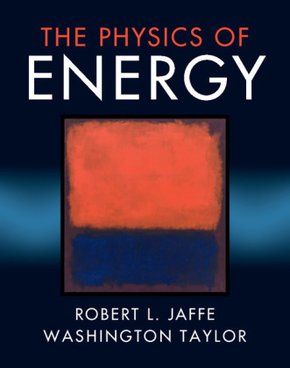
The Physics of Energy
| Verlag | Cambridge University Press |
| Auflage | 2018 |
| Seiten | 894 |
| Format | 22,6 x 28,1 x 4,3 cm |
| Gewicht | 2680 g |
| Artikeltyp | Englisches Buch |
| ISBN-10 | 1107016657 |
| EAN | 9781107016651 |
| Bestell-Nr | 10701665UA |
A comprehensive and unified introduction to the science of energy sources, uses, and systems for students, scientists, engineers, and professionals.
The Physics of Energy provides a comprehensive and systematic introduction to the scientific principles governing energy sources, uses, and systems. This definitive textbook traces the flow of energy from sources such as solar power, nuclear power, wind power, water power, and fossil fuels through its transformation in devices such as heat engines and electrical generators, to its uses including transportation, heating, cooling, and other applications. The flow of energy through the Earth's atmosphere and oceans, and systems issues including storage, electric grids, and efficiency and conservation are presented in a scientific context along with topics such as radiation from nuclear power and climate change from the use of fossil fuels. Students, scientists, engineers, energy industry professionals, and concerned citizens with some mathematical and scientific background who wish to understand energy systems and issues quantitatively will find this textbook of great interest.
Inhaltsverzeichnis:
Part I. Basic Energy Physics and Uses: 1. Introduction; 2. Mechanical energy; 3. Electromagnetic energy; 4. Waves and light; 5. Thermodynamics I: heat and thermal energy; 6. Heat transfer; 7. Introduction to quantum physics; 8. Thermodynamics II: entropy and temperature; 9. Energy in matter; 10. Thermal energy conversion; 11. Internal combustion engines; 12. Phase-change energy conversion; 13. Thermal power and heat extraction cycles; Part II. Energy Sources: 14. The forces of nature; 15. Quantum phenomena in energy systems; 16. An overview of nuclear power; 17. Structure, properties and decays of nuclei; 18. Nuclear energy processes: fission and fusion; 19. Nuclear fission reactors and nuclear fusion experiments; 20. Ionizing radiation; 21. Energy in the universe; 22. Solar energy: solar production and radiation; 23. Solar energy: solar radiation on Earth; 24. Solar thermal energy; 25. Photovoltaic solar cells; 26. Biological energy; 27. Ocean energy flow; 28. Wind: a highly vari able resource; 29. Fluids - the basics; 30. Wind turbines; 31. Energy from moving water: hydro, wave, tidal, and marine current power; 32. Geothermal energy; 33. Fossil fuels; Part III. Energy System Issues and Externalities: 34. Energy and climate; 35. Earth's climate: past, present, and future; 36. Energy efficiency, conservation, and changing energy sources; 37. Energy storage; 38. Electricity generation and transmission.
Rezension:
'This magnificent book provides an astonishingly comprehensive, yet deep and accurate, coverage of the physics of energy. It also introduces much of the engineering, and some of the chemistry and biology. As well as being a superb text for those who are new to the subject, it will be an invaluable reference for experienced researchers seeking to refresh, deepen or broaden their knowledge and understanding.' Sir Chris Llewellyn Smith FRS, Director of Energy Research, Oxford University and Director General of CERN 1994-98
